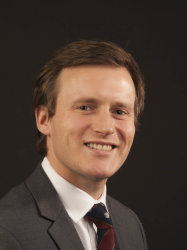Research: Optimising surgery using bone quality metrics
Fractures around orthopaedic metalwork (peri-prosthetic fractures) are a growing problem, partly owing to the difference in stiffness between implant material and patients' bone. The cumulative mortality rate for patients suffering a peri-prosthetic fracture is similar to the mortality after a hip fracture. They are devastating injuries for patients with a high dissatisfaction rate and are often very difficult injuries to manage. With an ageing population, the demand for orthopaedic operations including hip and knee replacements is increasing and patients are surviving longer than the predicted life of their orthopaedic implant, leading to problems with bone stock around the implant as they age.
Bone is a living material and it adapts to the mechanical environment it is subjected to. Bone adapts by remodelling when it is subjected to bearing less load by becoming more porous or thinner. After surgery, as a result of orthopaedic implants being stiffer than bone, the bone adapts to the reduced load, remodelling to become thinner and more porous. This process of bone remodelling is called stress shielding. Stress shielding may lead to gradual loosening of the implant and the weaker bone may be more prone to fracture in a fall, leading to fractures of bone around implants (peri-prosthetic fractures).
The stiffness of a structure is related to its material-level stiffness (elastic modulus) and cross-sectional area. By increasing the elastic modulus or the cross-sectional area an implant will become more stiff. Low stiffness implants can reduce stress shielding. However, reducing the implant stiffness changes the stresses at the implant bone interface and may be detrimental to implant survival. With information about the patient’s bone stiffness, a surgeon may be able to choose an implant with material properties appropriate for patients with poor bone quality and reduced bone stiffness. Currently in orthopaedic practice there is no reliable method of measuring bone material properties. Oliver's PhD focussed on addressing this issue.

